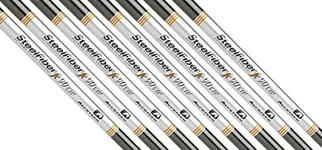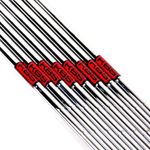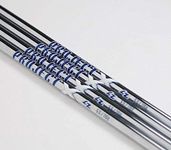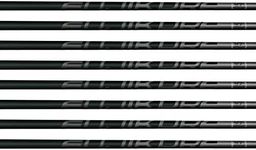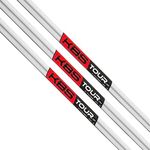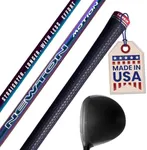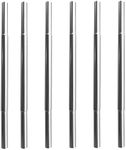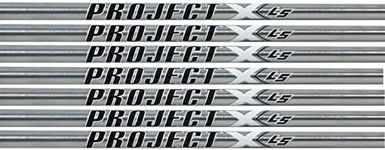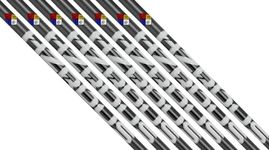Buying Guide for the Best Iron Shafts
Choosing the right iron shafts for your golf clubs is crucial for improving your game and ensuring you have the best possible experience on the course. The right shaft can help you achieve better accuracy, distance, and control. When selecting iron shafts, consider factors such as your swing speed, playing style, and personal preferences. Understanding the key specifications will help you make an informed decision and find the best fit for your needs.MaterialIron shafts are typically made from either steel or graphite. Steel shafts are heavier and provide more control and accuracy, making them a popular choice for experienced players. Graphite shafts are lighter and can help increase swing speed and distance, which can be beneficial for beginners or players with slower swing speeds. Consider your playing style and physical strength when choosing between steel and graphite.
FlexThe flex of an iron shaft refers to how much it bends during the swing. Common flex ratings include extra stiff (X), stiff (S), regular (R), senior (A), and ladies (L). A stiffer shaft provides more control and is suitable for players with faster swing speeds, while a more flexible shaft can help generate more distance for players with slower swing speeds. To determine the right flex for you, consider your swing speed and how you want the club to feel during your swing.
WeightThe weight of an iron shaft can affect your swing speed and overall feel of the club. Heavier shafts provide more control and stability, which can be beneficial for stronger players with faster swing speeds. Lighter shafts can help increase swing speed and are often preferred by players with slower swing speeds or those looking for more distance. Choose a shaft weight that complements your physical strength and swing characteristics.
LengthThe length of an iron shaft can influence your posture, swing mechanics, and overall comfort. Standard lengths are designed to fit the average golfer, but custom lengths can be tailored to your specific height and arm length. A longer shaft can help generate more distance, while a shorter shaft can provide better control. Consider your height, arm length, and playing style when selecting the appropriate shaft length.
TorqueTorque refers to the amount of twisting the shaft undergoes during the swing. Lower torque shafts provide more stability and control, which can be beneficial for players with faster swing speeds. Higher torque shafts can help generate more distance and are often preferred by players with slower swing speeds. Evaluate your swing speed and desired level of control when choosing the right torque for your iron shafts.
Kick PointThe kick point, or bend point, is the location on the shaft where it bends the most during the swing. A high kick point results in a lower ball flight, while a low kick point produces a higher ball flight. Mid kick points offer a balance between the two. Consider your desired ball flight and playing conditions when selecting the kick point that best suits your game.
